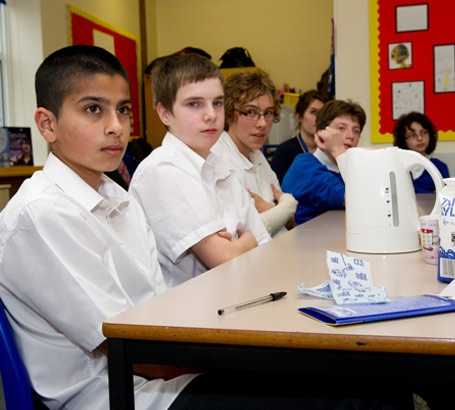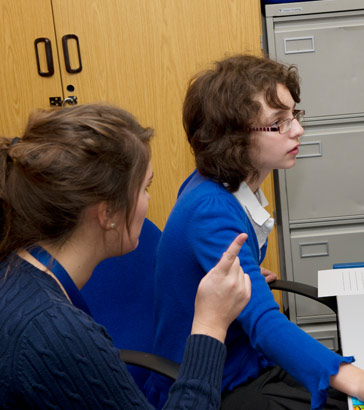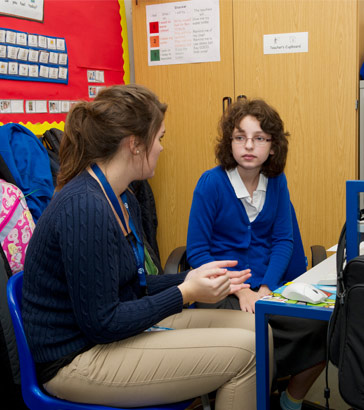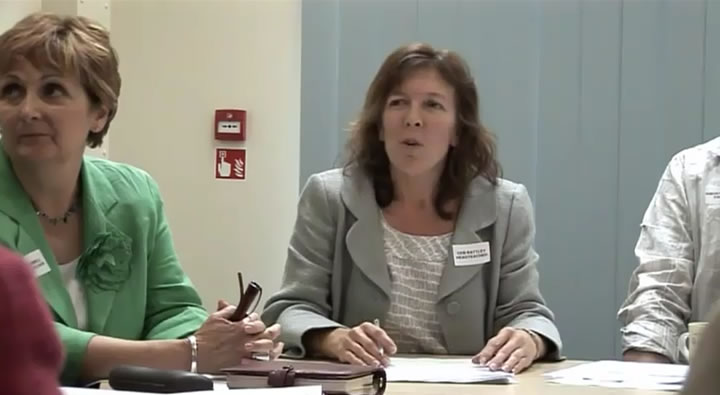
Inclusion of children with CLDD in mainstream is becoming
more common as more staff understand their needs. Extra adults are employed in the classroom to help the children.
Is this good or bad for the rest of the class? Consider what it might mean to have a child with complex needs in a mainstream
classroom. Make a list of the differences that CLDD inclusion
might make and who in school might deal with any extra requirements.
Watch this video of part of a review meeting in which Sophia's sessions in mainstream were discussed. There were difficulties expressed by mainstream teachers, but the parents were strongly in favour of her inclusion. The decision reached was that Sophia's attendance at mainstream school should be reduced from two days to one day a week.

In the present system, a child with CLDD in the mainstream
classroom would be supported by a TA according to the statement issued and the funding
agreed (SEN Code of Practice, 2001).
What support might a child with complex needs have in a mainstream class? Make three lists.
- The difficulties of adjusting the school environment.
- The adjustments of the child to the mainstream class.
- The influence of the child on the other classmates.
mainstream setting

- Children with complex needs are likely to have mobility problems. They might not be able to manoeuvre around furniture with sticks or walking frame. There may be stairs, steps and thresholds that are unmanageable. How would they move?
- Even if mobile there may be visual problems or hearing deficiencies. How could they see or listen to the teacher?
- Genetic abnormalities often cause intellectual impairment. How can they learn at their own pace?
- The child might look unusual physically. How will other children react to them?
- The dedicated TA may be away from school ill. How would a child who relies on a particular person cope?
Some solutions are suggested on the following page.

- TAs develop strong bonds to help the child belong to the group. The TA can facilitate and encourage exchange with peers even if language is limited. Teachers and TAs can be mediators.
- Furniture can be adapted and ramps included.
- Toilet facilities can be upgraded.
- Medical facilities can be arranged.
- TAs can be trained in dealing with different conditions.
- Teachers and SENCOs plan independent learning programmes.
- TAs can be trained to deliver lessons one-to-one or in small groups.
Think of more solutions to likely problems.

With more parental choice and funding patterns starting to change, it may be that more CLDD children will be in mainstream. As facilities improve and the way professionals work together
develop further, we may see more services as 'outreach'.
Support systems from LEAs already provide some outreach services such
as advisers to schools on autism, dyslexia and other high incidence disabilities. Some mainstream schools work with special
schools to allow children to experience both facilities.

